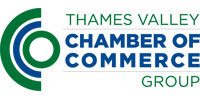Native advertising is taking the adtech world by storm. Last year, eMarketer forecast that US advertisers alone would spend $97.46 billion on native advertising in 2023, while another report from Future Market Insights forecasts that the market for native advertising will be worth $650 billion by 2032, growing at a Compound Average Growth Rate of 375% between 2022 and 2032.
So why the enthusiasm for native? Because quite simply, it works. In fact, it works so well that it enables advertisers to make their budgets go much further compared with other formats. Simply put, native ads - which look more natural, more contextual, and blend in seamlessly with surrounding content which the user has come to the website or the app to see - yield higher performance.
Native ads are viewed 53% more than display ads, as well as creating an 18% increase in purchase intent. What’s more, visual engagement can sometimes prove slightly higher than the original editorial content on the page - with higher CTRs.
They are versatile too. You will see native ads in-feed ads on social networks; as paid ads in search engine results; as a promoted listing on sites such as Amazon; and as recommendations of content to look at when the user reaches the end of an article.
But success in native advertising is not a given, so here are five things to consider if you want to use native advertising most effectively.
Context is key
When running a campaign on a native advertising platform, the placement of the ad in terms of when and where it appears, is key. Left to its own devices, programmatic advertising can result in ads for products appearing in the most unlikely and irrelevant places. A specialist DSP will spend a lot of time vetting sites, creating inclusion and exclusion lists, to ensure that native ads appear in the right context.
For instance, if it’s an ad for a travel company, it appears alongside travel content, or other relevant content such as food and drink. It sounds obvious, but it’s surprising how many native ads appear in the wrong place because the media agency running the campaign hasn’t put enough effort into placement.
Choose an advertiser-focused platform
A good native advertising platform should always be working on the advertiser’s behalf, looking to secure them the best placements at the best price. It should be publisher-agnostic, but ensure that publisher’s content is both brand-safe and relevant. This platform functionality ensures there is no conflict of interest, while also avoiding placements within less-than-optimal environments just to keep a publisher happy.
Seek out quality, high-performing, AI-assisted creative
A good native advertising platform should be tuned in to the latest developments in AI, in order to generate ad creatives quickly and at scale. A good DSP will invest a great deal of time, effort and money into generative AI capabilities.
At Preciso, we’ve been working closely with the AI Chip Centre at the Digital University of Kerala, leveraging advanced AI technology to auto-generate ads - including both text and images - based on keyword inputs.
Measure and optimise
Advertising doesn’t exist in a vacuum. No matter how good it looks, or how relevant the placement, the success of an ad campaign boils down to how it performs and the engagement and clicks it generates. By choosing a DSP that has a direct integration with Google Analytics, advertisers can see exactly how users are engaging with their ads, and which placements are working best so they can optimise for those.
Look for a human-centric platform
Advertisers should look for a native advertising platform that has been designed from the ground up to be intuitive and user-friendly. One where users can get up to speed with the platform and start running campaigns in no time. At the same time, no matter how much - or little - you spend with the platform, you should have access to a dedicated customer support team for those moments where you need some help, or just want to talk through ideas for the next campaign.
Keep these five points in mind and your native campaigns will fly.
